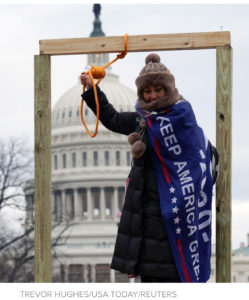We find ourselves again at a critically important moment of needing to bring unity to very divisive patterns of behavior. It’s understandable; we are sinful people trying to live in community with other sinful people, and that can get messy.
In one sense, this is nothing new. Jesus knew unity among Christians would be important, so much so that He devoted time in prayer to the topic the night before His crucifixion. In John 17, Jesus asks His Father to bring unity to all those who will come to believe in His message.
Believing that racism is outside of God’s realm has long been part of mainstream Christian practice in the US. Sometimes we want to contrast gospel work with social work. Not all social work is indeed gospel work, but all gospel work puts us right in the middle of the public square.
An academic concept called Critical Race Theory (CRT) is being touted as a method of understanding this divide. Some churches teach CRT is opposed to the Christian Faith and communicate that CRT is “At the center of understanding the theological implications and tenets of addressing race.”
Those for or against this concept ground their narratives in Scripture. The messages could not be more different, yet both are based on an interpretation of the same Christian faith:
“There is neither Jew or Greek, there is neither slave nor free
. . . for you are all one in Christ Jesus.” Gal 3:28
Let’s break CRT into digestible bites.
First, A “critical theory” teaches truth is achieved by taking a critical approach to ideas, beliefs, and practices.
Second, adding “race” is intended to offer a critical perspective on the causes, consequences, and manifestations of race, racism, inequity, and power and privilege dynamics.
The combined concepts lead to the definition:
“CRT is the Idea that the law is inherently racist and designed by Caucasians to maintain or further their standing in politics and economics over minorities. As with Marxism, the idea is to have improvements and reform; conflict is necessary to bring about a resolution.”
|
As members of the faith community, we must view this definition from the balcony to remind ourselves of what’s really at stake – setting your mind on God’s purposes, not man’s.
Does this definition provide a theological perspective of Christ-centered otherness, or is it an attempt to defend or refute strongholds? St. Anselm defined theology as “faith seeking understanding. For it is not the replacement of faith with knowledge; rather, it is faith that motivates understanding and leads us in the pursuit of knowledge.”
Biblically speaking, racism is the sin of ethnic partiality or prejudice (James 2:8–9; Leviticus 19:15). As Christians, we know racism is wrong in society, as we are all one race in Adam (Acts 17:26), especially within the church (Galatians 3:28). We should be concerned about racism and aim to think biblically about it.
Allow me to take you to the balcony to bring nuance to this charged conversation.
Everyone sees things from their perspective and creates a set of beliefs to support their argument. On Sundays, 9 in 10 Christian churches nationally are predominantly of one race group, according to LifeWay Research. Is it the preaching style, musical preferences, or something else?
How should the church respond to the racism that many believers have endured from within their faith community? And how does the watching world respond to the Great Commission when viewed through the lens of our actions?
Three of the words could be viewed as problematic in this CRT definition and cloud a thoughtful analysis:
- The capitalized word “Idea” is code for I don’t believe this principle, and neither should you.
- The reference to “Marxism” puts the definition (and issue) into a frame of materialism and capitalism.
- “Conflict” is a code for disagreement with the status quo.
Instead of adopting secular methods and applying secular thinking to fix spiritual problems, Christians should look to the whole of Scripture to address relational behavior within the body.
We must be thoughtful about our actions and conversation, so we can deal with the underlying issue: the sin of self-interest and Satan’s efforts to continue to breed prejudice, mistrust, and chaos.
We understand the original Biblical idea that life gets better through difficult times, and we keep going because there is hope. It’s when we are tested that we learn who we really are. There is no better time than this Lenten season to access how we view our fellow brothers and sisters.
Take some time to do your own research on the subject of CRT. Then you can effectively engage with Part 2, as we will explore the assumptions made and how their interpretations may cloud or clarify a Christ-centered resolution to race within the church.
Most importantly, you will discover if you are operating from a soul surrendered to the will of God or the will of self-interest. . .





